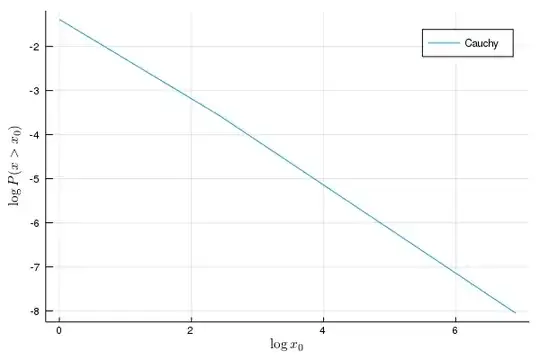The heaviest tailed smooth normalizable continuous distributions that I am familiar with are those with fat power-law tails $\frac{1}{x^{1+\alpha}}$, e.g. a Pareto with $\alpha\rightarrow 0^+$ or a Student's t with $\nu\rightarrow 0^+$, but are there distributions with heavier tails? I am curious about what is the worst case possible for a distribution that decreases monotonically away from a peak positive value towards a minimum of 0.
I think that the heaviest possible normalizable heavy tails are indeed those asymptotic to $\frac{k}{x}$ as $x\rightarrow\infty$ (where $k$ is some constant), but have not been able to prove it to my satisfaction nor find a clear statement of this in the literature. I wonder if my belief is either obvious to experts or wrong.
A couple of notes:
- A function $f(x)$ is heavier-tailed than $g(x)$ for $x>0$ if there exists some finite $x_0$ such that for all $x>x_0$, $\int_{x}^\infty f(x)\,dx > \int_{x}^\infty g(x)\, dx$. (As discussed in the answer to: Which has the heavier tail, lognormal or gamma?)
- It does not matter that the distribution has no finite moments, just that it integrates to 1 over the range $[0,\infty]$ (one-sided) or $[-\infty,\infty]$ (two-sided).
